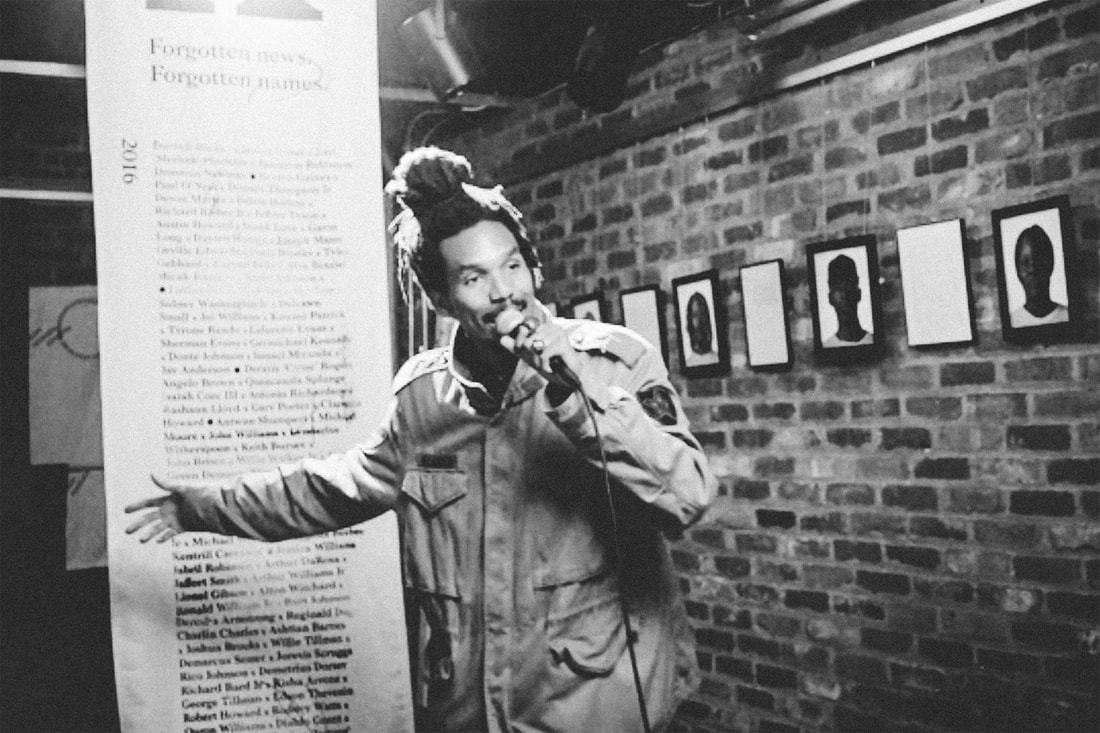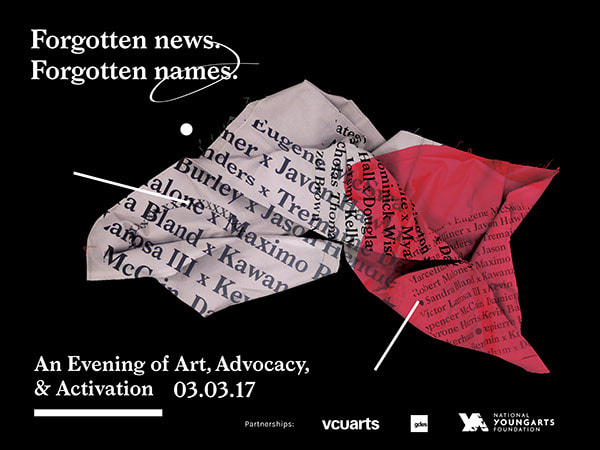 Forgotten News, Forgotten Names Forgotten News, Forgotten Names is an art exhibition billed as an evening of art, advocacy and activation that took place in Charlottesville on March 3, 2017. The artists hosting and performing in the exhibition were Joseph Webb, who served as the emcee and is a tap performer, Denzel Boyd, who is a designer and past Adobe Design Achievement Award Winner, and filmmaker Tyler Rabinowitz, a current Sundance Ignite Fellow. These three highly prestigious young artists set out to use art to engage the conversation in the community. The exhibition was used as a tool to encourage a conversation about police brutality featured the names of people killed by the police in 2015 and 2016. The bulk of the performance was a call and response set to tap dancing where Joseph would encourage the crowd to “say his name.” During the spoken-word tap performance and screen printing session the artists wanted the crowd to Say their names, See their names, Feel their names. News organizations sometimes choose not to use violent criminal’s names because they do not want to glorify these individuals or promote their name in the same way that this exhibit did not want to satisfy people’s curiosity with every detail of a criminal’s story. This exhibition focused solely on the victims, the survivors, the heroes, and the resilience that leads to community recovery. Video clip and photos from the movie and song, “Hell You Talmbout.”
2 Comments
I have been reading “Social Justice Art: A Framework for Activist Art Pedagogy” by Dr.
Marit Dewhurst. In this fascinating book, she writes about art’s power to engage students in thinking about their role in addressing social injustice. Dr. Dewhurst identifies three key moments in the creation of art that impact the artist’s intention to change social injustice: connecting, questioning, and translating. Connecting to the audience is very important. In the song Breathe written by India Arie, she is connecting to the television viewer as they are home watching the news. Empathizing with the audience as they see news coverage of Eric Garner’s death and his last words, “I can’t breathe.” According to the New York Post, Eric Garner died on July 14, 2014, in Staten Island, New York after police put him in what was described in the article as a chokehold. The words of Ms. Arie’s song begin, “Sometimes you just can't believe the things your eyes see, So much injustice in this life, If it's happenin' right on your TV screen, So you drop to your knees and you're prayin', 'Cause you can hear him sayin' he can't breathe.” Ms. Arie spoke to Essence magazine about how she feels her mission with her music is to spread hope and healing through her words and music. This song is on the album, Worthy. Further Resources: Sullivan, C. (2014, November 04). Man dies after suffering heart attack during arrest. Retrieved August 27, 2017, from http://nypost.com/2014/07/18/man-dies-after-suffering-heart-attack-during-arrest/ Dewhurst, M. (2014). Social justice art: a framework for activist art pedagogy. Cambridge, MA: Harvard Education Press. |
This blog chronicles my research in activist art and my life as a woman in academia. Categories
All
Archives
September 2020
|
